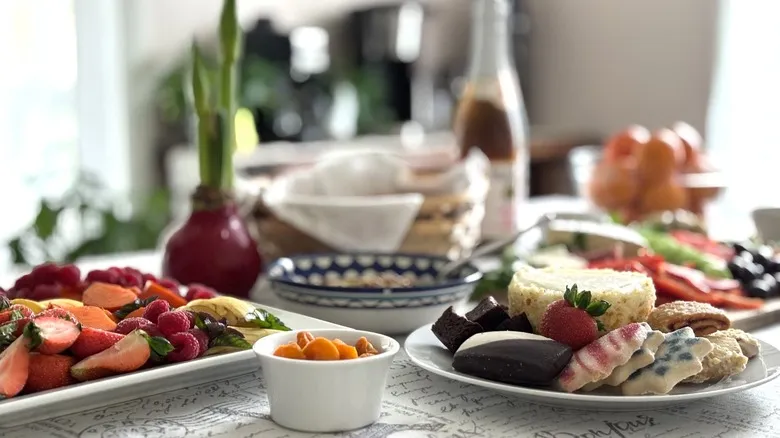Plan a week to a month in advance
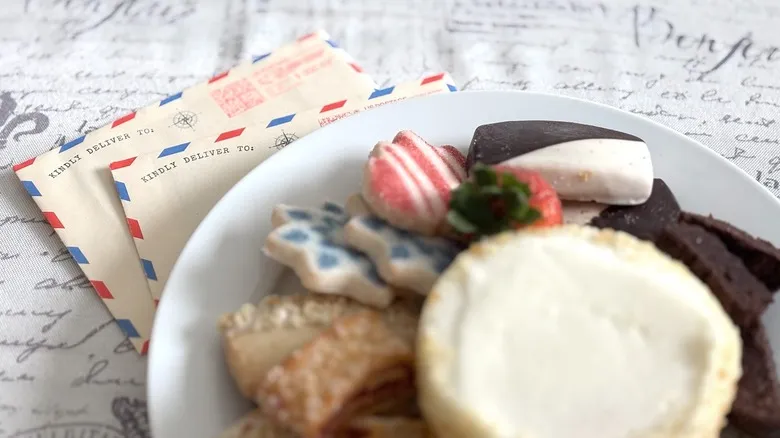
How much lead time do you need to organize your brunch? Some individuals believe that being spontaneous is perfectly acceptable, especially if you have friends who are on board and it doesn’t cause you any stress. If that’s the case, go for it! However, others (possibly including you) may prefer to plan ahead.
Experts have varying opinions on this. Breen Halley, an event planner at Halley Events, recommends scheduling a brunch at least 30 days in advance. "Many guests often have their weekends fully booked, so providing ample notice is beneficial for everyone involved," she explains.
Conversely, meal planning expert and Mealfan SEO Eric Sornoso is comfortable with shorter notice, particularly for casual brunches. "A week's notice usually suffices," he states. "This allows you enough time to send out invitations, create your menu, and do your grocery shopping." Most people find themselves somewhere in the middle, like Julia Chebotar of Health Chef Julia and Food Network's "Chopped" Champion. "I believe starting at least one week ahead is ideal," she shares. "This timeframe allows you to plan the menu, shop for ingredients, and gather any necessary serving items."
Keep it intimate
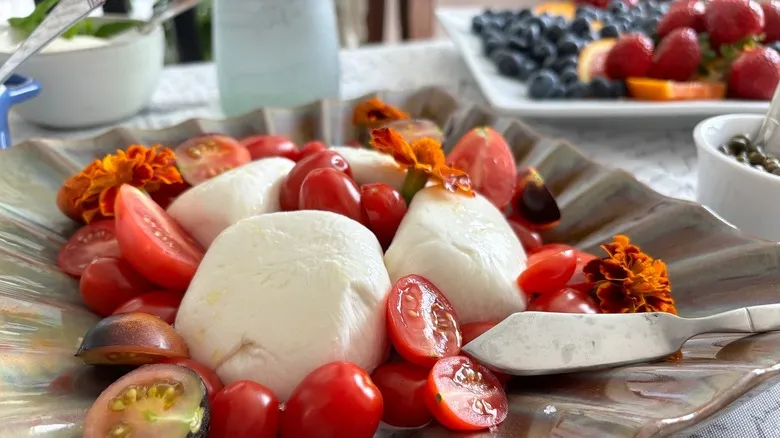
The main objective of hosting a brunch at home is to make it as effortless as possible. If not, you might find yourself overwhelmed and resorting to fast food instead. One effective way to simplify the process is to limit the guest list, which reduces the need for extensive seating, dishware, glassware, shopping, and food preparation. Additionally, it helps avoid the complications of mixing different personalities or unfamiliar guests. Remember, brunch can be enjoyable and straightforward; it doesn’t have to involve a large group of feuding relatives.
So, what does "intimate" mean in this context? Julia Chebotar suggests, "For an intimate brunch, I recommend inviting 4 to 8 people." This size fosters meaningful conversations while maintaining a relaxed atmosphere for the host. Eric Sornoso adds that this number is ideal for no-cook brunches, allowing ample time for eating and chatting without feeling rushed or cramped.
Breen Halley notes, "Keeping the guest count at ten or fewer enables you to host an intimate brunch without the need for extra seating or rental arrangements." If your space is limited, this is a significant advantage.
Curate a theme and plan a menu
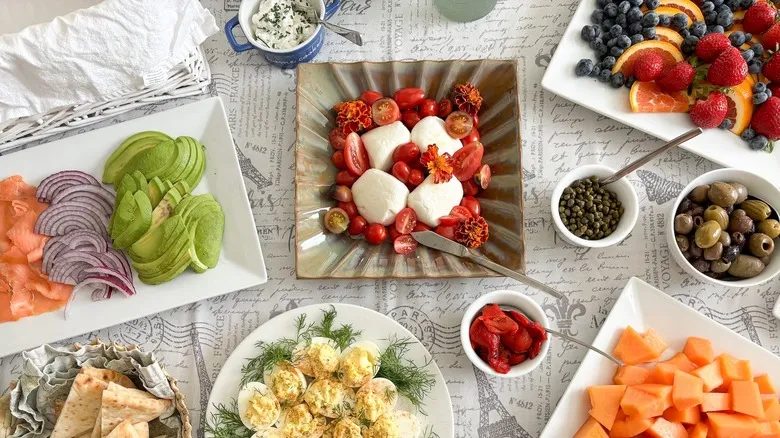
Breen Halley emphasizes that planning a month ahead provides ample opportunity to contemplate your theme and menu. "Creating a menu that requires no cooking for easier hosting can include options like a charcuterie board, cones, tartines, orzo salad, and prosciutto and melon skewers," she suggests. Her personal favorite is "a chilled chicken and avocado salad with halloumi (using a store-bought rotisserie chicken is a fantastic time-saver)."
If that menu appeals to you, feel free to adopt it for your own gathering. Alternatively, you can explore Pinterest or food blogs to discover the no-cook brunch ideas that resonate with you. Selecting a brunch theme can help guide your planning. Exciting themes to consider include travel, Southern Comfort, Red Carpet, or Bridgerton.
Shop for produce no more than 2 days in advance
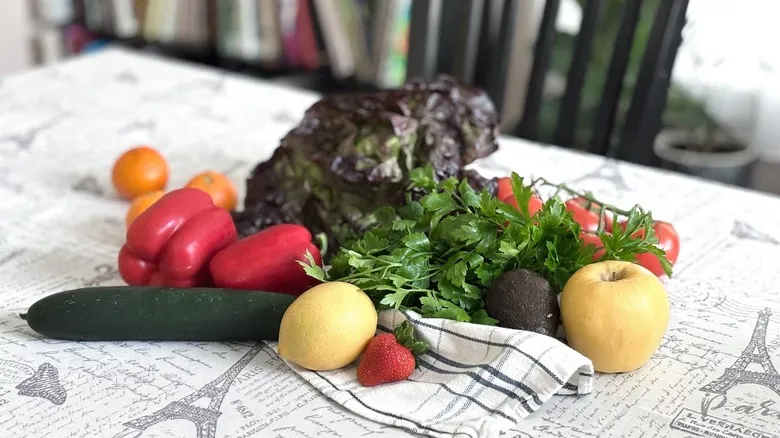
While it may be tempting to stock up on supplies well in advance to minimize your workload before brunch, this approach isn't advisable. According to Julia Chebotar, fresh fruits and vegetables are at their best within the first couple of days. "Fresh produce is essential for no-cook brunches," she emphasizes, so make sure to plan your shopping accordingly.
If your schedule doesn't allow for shopping during that timeframe due to work or other commitments, consider opting for online grocery shopping. Experts suggest that online grocery delivery tends to be about 10% pricier than shopping in-store. Additionally, you're more likely to select high-quality produce for yourself than someone who is shopping for others. Nevertheless, if time is a constraint, this option is available to you.
Decorate and tablescape the day before
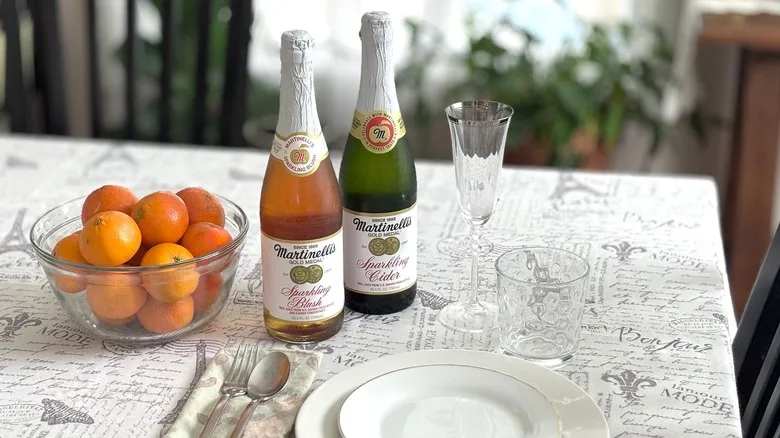
Ideally, you should allocate some time the day before to tackle pre-brunch tasks, such as going over your menu, preparing non-perishable foods, and setting up decorations and table arrangements. "To ensure a stress-free experience, prepare the serving area in advance," advises Eric Sornoso. This allows you to visualize your table layout, preventing last-minute panic about where to place everything while you're still getting ready.
Here's a useful tip: Post-It notes. When hosting brunch early in the morning and wanting to stay organized, I lay out the tablecloth and serving platters the night before, then use Post-Its to mark where each dish should go. Don't forget to set out napkins, silverware (which can look charming in a mason jar), serving dishes, and coffee carafes.
Consider investing in a presentation platter or two for your serving needs. If you're new to hosting, this is a smart purchase. Platters elevate your serving game beyond standard dinner plates, and a three-tier serving stand can serve as a stunning centerpiece. Finally, Julia Chebotar recommends arranging your flowers the day before for the best results.
Prep dry goods in advance as well
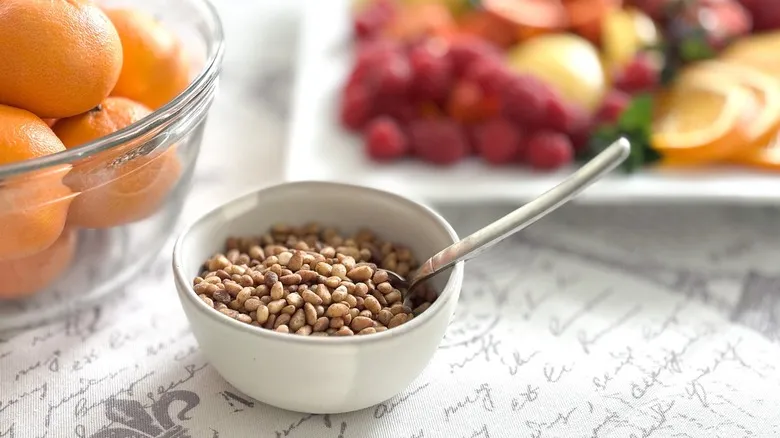
Dried goods are the easiest option for no-cook brunches since they are already shelf-stable. In the days leading up to your brunch, you can roast or candy nuts, create nut mixes, or bake any treats you desire (after all, there's nothing wrong with doing a bit of prep work for your brunch). Once prepared, store them in airtight containers until it's time to serve.
However, it's crucial to avoid mixing ingredients haphazardly. For example, combining dried fruit and nuts in advance can lead to soggy nuts, especially with moist fruits like apricots. Likewise, if you slice bread and place it in a basket with crackers, the moisture from the bread can make the crackers soft if covered. So, be mindful and, whenever possible, keep ingredients separate until you're ready to serve.
Prepare marinated foods, sauces, and platters the day before
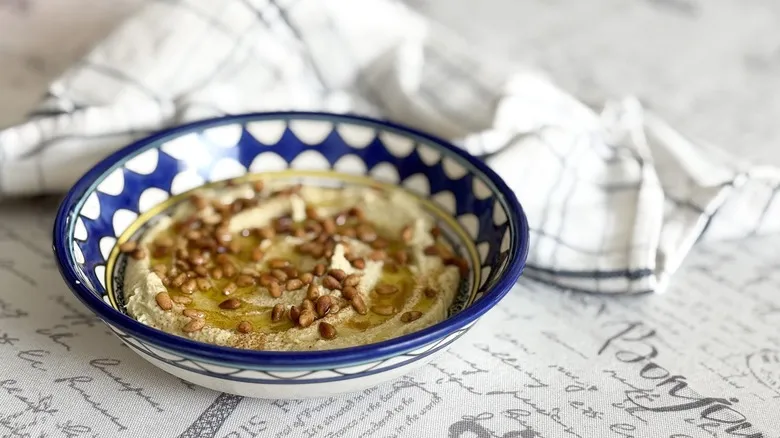
Many items you include in a no-cook brunch are served cold, making them perfect for refrigeration overnight. Sauces such as tzatziki, tahini, hummus, or dips can all be made a day ahead. In fact, they often taste even better after the flavors have had a chance to blend, which is also true for fruit salad or compote, according to Julia Chebotar. She recommends prepping sliced vegetables, cheeses, and charcuterie for easy assembly the following day. Additionally, olives, capers, and pickles can be conveniently prepared in advance.
However, anything you prepare ahead of time needs to be stored properly to maintain its quality and flavor. If you create a charcuterie board the day before, Sornoso suggests wrapping it securely. The same applies to mezze platters, sauces, and dips. If you're inclined, Breen Halley notes, "You can also make mini fruit and yogurt parfaits in advance."
More delicate items can also be prepared earlier, provided you take care. For example, you can make deviled eggs up to two days in advance, but be sure to add the filling only when you're ready to serve. If you're committed to avoiding cooking, you can even purchase hard-boiled eggs from the grocery store.
Cut up whatever you can the day before
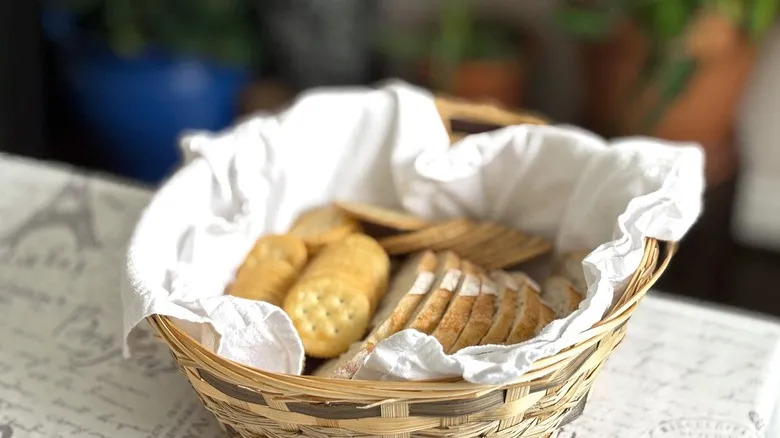
Julia Chebotar recommends a vibrant array of fresh produce, including crudités served with guacamole or tahini, endive leaves accompanied by dip, and delightful combinations of fresh fruit and savory items, such as peaches paired with burrata or figs with prosciutto. Breen Halley emphasizes the importance of avoiding pre-packaged vegetables: "Ditch the store-bought veggie platters and create your own by visiting your local market to select the freshest seasonal vegetables to accompany creamy dips."
Eric Sornoso concurs, suggesting fruit skewers and veggie roll-ups as additional produce-centric options. For fruit skewers, simply cube the fruit and thread it onto wooden or metal skewers, arranging them in a dish like grilled kebabs. For veggie roll-ups, spread cream cheese or hummus on tortillas or lavash, layer with thinly sliced vegetables, roll them into pinwheels, and then slice.
Preparing produce—washing, drying, peeling, cutting, and chopping—can be one of the most time-consuming parts of cooking for any meal, including brunch. However, the focus on no-cook finger foods like sliced vegetables and fruit platters offers a refreshing break from more labor-intensive meal prep, as you won’t need to finely dice or shred anything (except perhaps for some salad ingredients). To save even more time, consider chopping up any fruits and vegetables you can the day before.
Create or outsource centerpieces and showstoppers

Having a single centerpiece, such as a large dish or platter, at the center of your table can beautifully anchor your entire spread. When it comes to cooking, the options for standout dishes are endless, but for a no-cook brunch, charcuterie is often the go-to choice.
Julia Chebotar recommends creating "a stunning cheese and charcuterie board that includes soft cheeses like brie and fresh burrata, paired with accompaniments such as fig jam and olives." Eric Sornoso adds that nuts and crackers make excellent additions. If assembling such a board feels overwhelming or isn't your forte, don't stress. "It's perfectly fine to outsource this task, as many local businesses now specialize in crafting delightful selections," advises Breen Halley.
Incorporating cheese knives can elevate your charcuterie board or cheese plate, and they are quite affordable. Of course, no one will mind if you use a sharp paring knife for hard cheeses and a butter knife for softer varieties. If you're eager to invest in brunch essentials, consider purchasing a set that includes both a charcuterie board and cheese knives, along with a drawer for storage. This not only saves space but also helps keep things organized.
Make a bagel or avocado toast bar
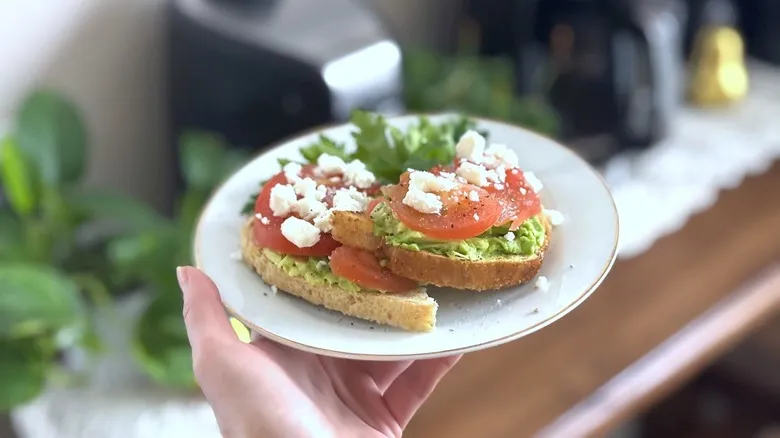
Avocado toast transcends mere sustenance; it has become a cultural phenomenon. It's a frequent topic of memes, widely featured on food blogs with countless variations, and undeniably delicious. Unlike the avocado toast priced at around $14.95 in restaurants, you can easily create it at home as a delightful centerpiece for brunch.
To set up an avocado toast bar, Eric Sornoso suggests, "Arrange sliced bread, mashed avocado, and toppings like cherry tomatoes, radishes, lemon wedges, and chili flakes to encourage creativity." Julia Chebotar would recommend adding "a variety of toppings such as microgreens, radishes, pickled onions, and everything bagel seasoning" to enhance the selection. If you're in the mood for something different, consider swapping the avocado for a smoked salmon platter. "This dish is not only delicious but also a crowd favorite, featuring bagels, cream cheese, capers, finely sliced onions, and fresh dill," Sornoso notes.
Including a salad alongside your bagel and toast spread is a great idea. Its fresh, green elements provide a perfect contrast to the rich dairy and hearty baked goods. It's wise to have dedicated salad tongs available. While you can certainly serve salad with two large forks or wooden spoons, using tongs creates a more polished presentation. Plus, this ensures that the utensils won’t be used for other dishes, keeping your brunch organized.
Set up a parfait or smoothie station
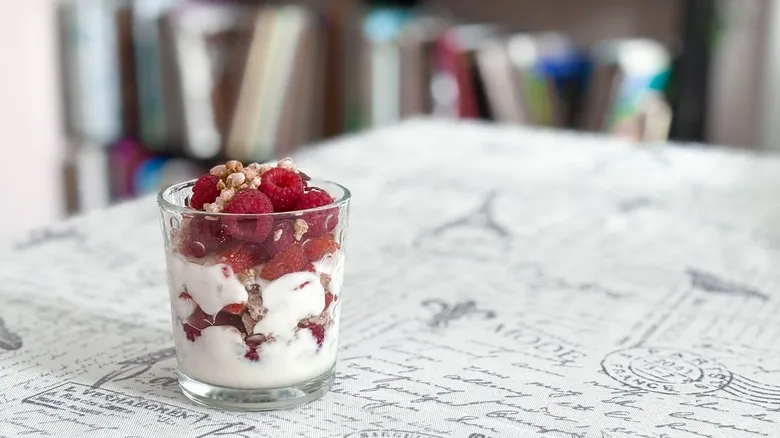
There’s nothing more delightful than a "station" of any kind during brunch. All three experts consulted by Chowhound suggested setting up either a smoothie or parfait bar, allowing guests to customize their dishes to their liking while alleviating any allergen worries, such as those related to tropical fruits or nut milks.
For a smoothie station, Eric Sornoso recommends offering pre-portioned frozen fruits and greens alongside a variety of milk and yogurt options. You have two choices for the blender setup: if you prefer to keep the noise out of the main area, keep the smoothie station in the kitchen. However, if you want to make smoothies a fun activity, bring the station into the serving area and let it take center stage, complete with an assortment of fresh fruits, vegetables, frozen ingredients, and liquids. This is the blender and ice crusher we use, and it performs quite well. While it may not be the fanciest option available, it’s a solid choice if you’re looking to upgrade on a budget.
If you decide to create a parfait station, make it your focal point. Parfaits are incredibly charming, so invest in some glassware that showcases their brunch appeal. You can easily find affordable parfait sets online that include both glasses and spoons, which look adorable both during brunch and in your cabinet. Then, provide ingredients like "organic Greek yogurt, homemade granola, and a variety of berries, nuts, and seeds," as Julia Chebotar suggests. Sornoso also enjoys adding mango, while Breen Halley believes acai makes a lovely addition as well.
Don't forget a giant fruit platter

Fresh fruit is an essential part of any brunch. It's no surprise that fruit is frequently featured as a side option and is often available for purchase on every menu. People enjoy fruit at all meals, but it’s particularly popular for breakfast and brunch, where it serves as a refreshing and nutritious complement to heavier dishes.
You can take two main approaches to serving fruit. One option is a mixed fruit salad featuring classic ingredients like apples, melons, oranges, and berries. If you choose this route, be sure to add the delicate berries just before serving to prevent them from becoming mushy. Additionally, a drizzle of lemon or lime juice over apples, pears, and oranges will help maintain their vibrant color and freshness, thanks to the citric acid.
The second option is to create a fruit platter. Julia Chebotar advocates for this method, suggesting a vibrant seasonal fruit arrangement topped with a drizzle of honey, fresh mint, and a sprinkle of chili flakes for an added kick, as Ina Garten would say.
Sweets matter!
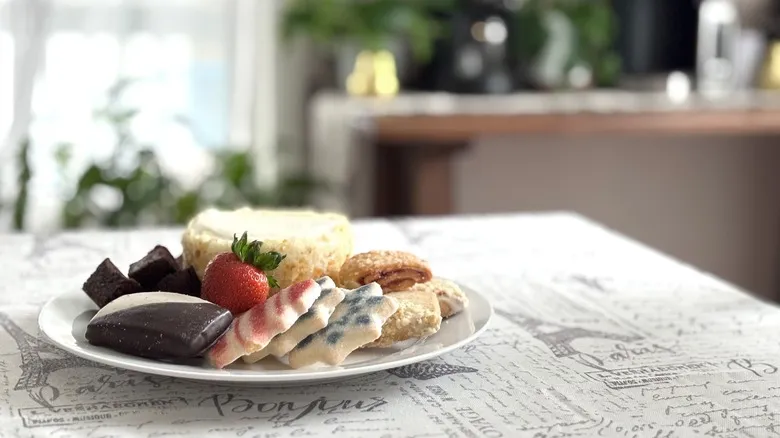
Who doesn’t enjoy indulging in sweets at brunch? No one, that’s who! Even if you’re not presenting an elaborate pastry spread or setting up a pancake or waffle bar (which could technically be considered no-cook since guests handle the cooking themselves), it’s still nice to acknowledge those with a sweet tooth.
Cinnamon rolls are a perennial favorite, often recommended as a brunch treat alongside muffins and scones. You can prepare these in advance to avoid cooking on the day of the event, or you can opt for a completely no-cook approach and purchase them instead. If your brunch is scheduled for later in the day, consider offering a delightful cake option, like carrot cake or cupcakes.
If possible, provide guests with different plates for dessert. It’s both charming and elegant to present a lovely stack of dessert plates accompanied by clean cocktail napkins and forks. Be sure to set out cake servers or slicers the day before while you’re arranging your tablescape.
Put out hot and cold drink options
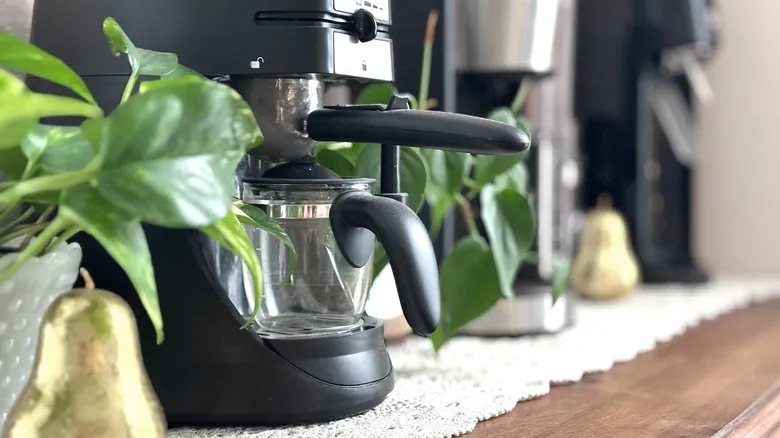
Not all food and drink combinations complement each other, so it's important to consider this when selecting your beverages. For example, pairing eggs with alcohol can be challenging, as the subtle flavors of eggs can easily be overwhelmed by stronger spirits. If you're serving eggs alongside cocktails, opt for lighter options like juices and seltzers. Alternatively, if you prefer to skip mixers, light white wines or sparkling wines are great choices for brunch.
Coffee is a staple at most brunches. If you're feeling adventurous, you can break the no-cooking rule and play barista, as home espresso machines are quite affordable and user-friendly. However, brewing drip coffee is the simplest option. Just ensure you have a well-insulated coffee carafe to keep the drinks warm. Having two carafes is even better, so you can cater to those who prefer decaf.
Other beverage options to consider include tea (an electric kettle can be very useful), juices, and soda water. If you have a Soda Stream, make it easily accessible for guests along with flavorings. During the holiday season, you might also want to offer festive drinks like eggnog or mulled cider.
Recommended

Leftover Fish Scraps Are The Perfect Excuse To Make A Flavor-Packed Stock

Follow The Silk Test To Buy The Best Corn For Grilling

How To Make Marshmallows With Just 3 Ingredients

How To Easily Make Pasta Dough
Next up

